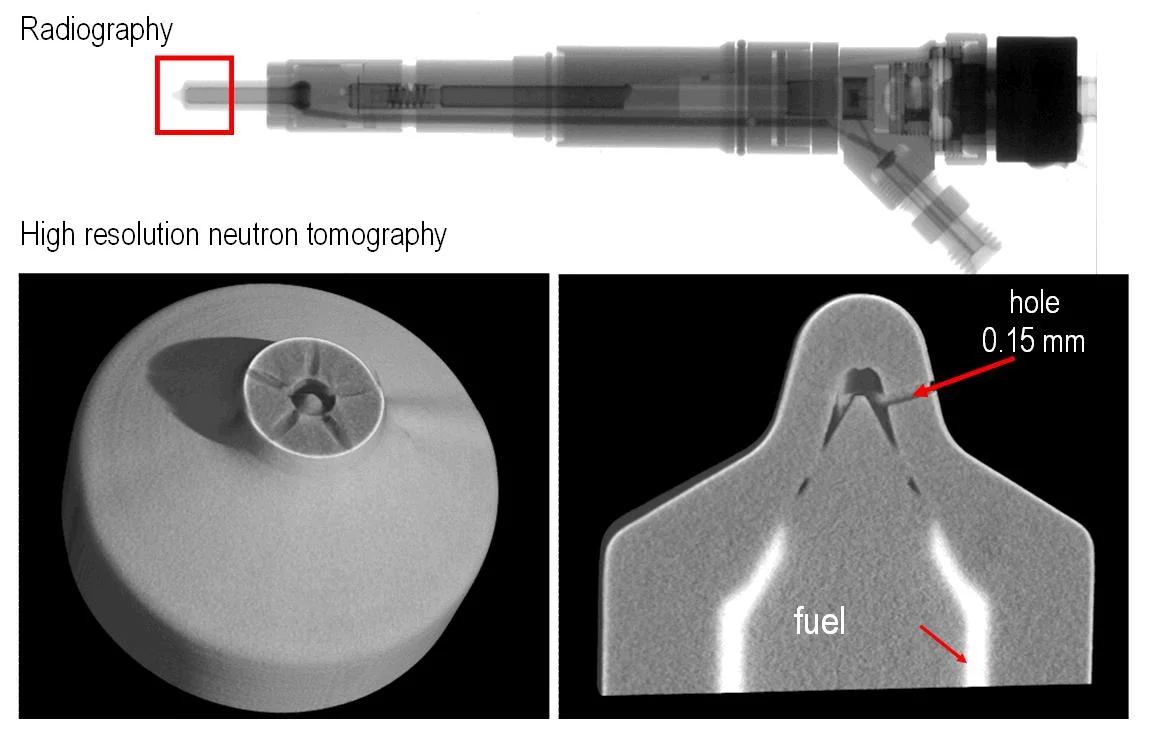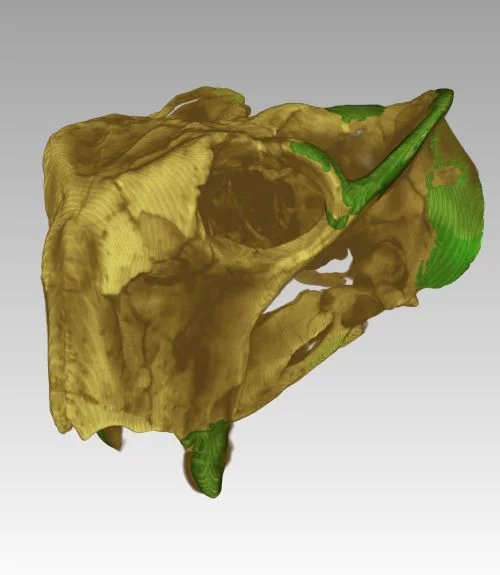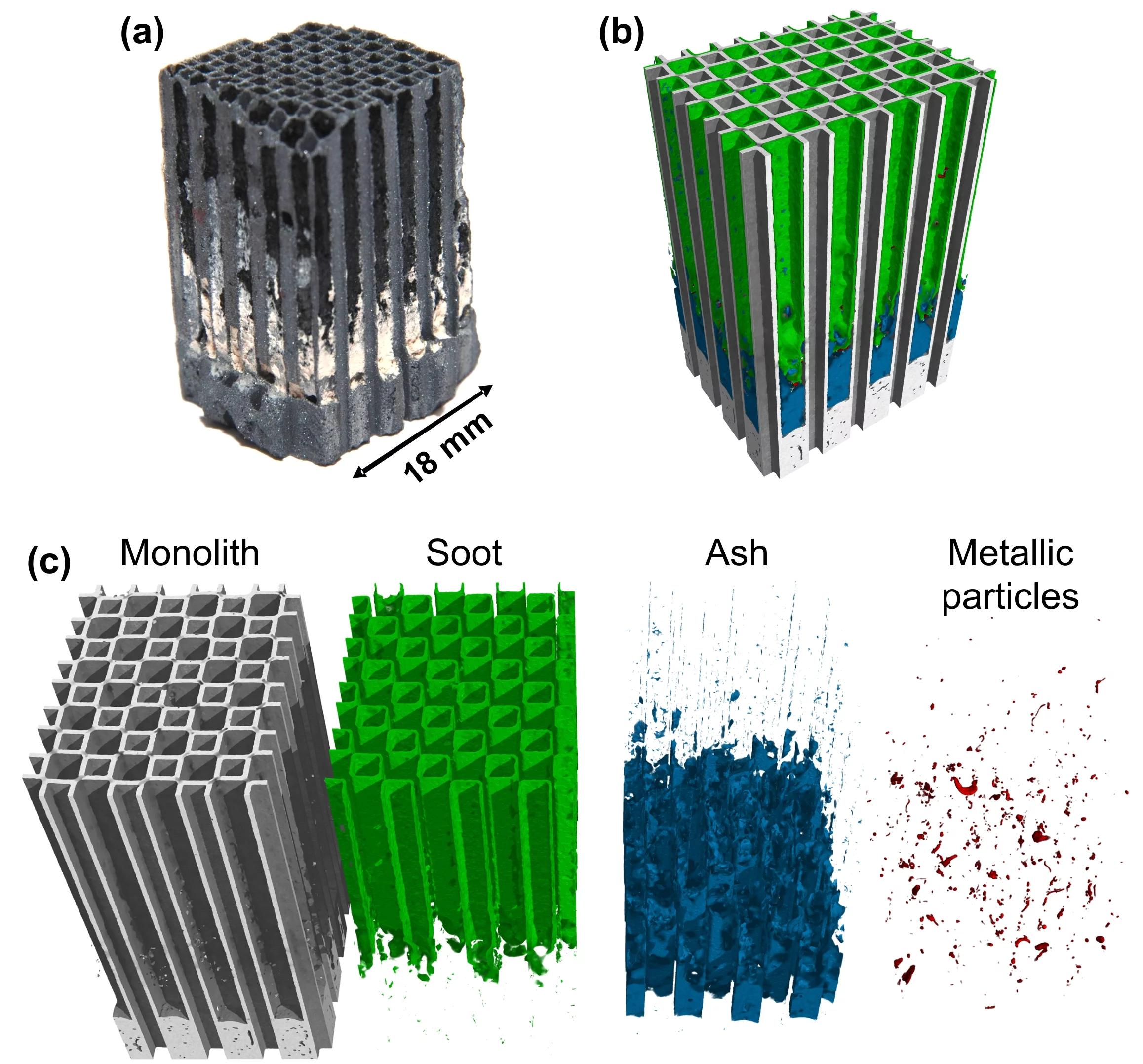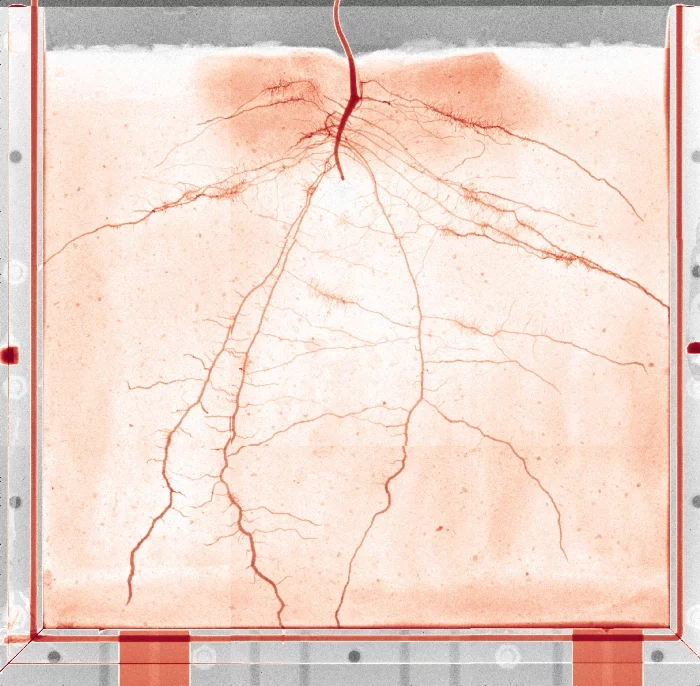Selected images created by neutron radiography / tomography are shown below. They illustrate the broad range of applications where neutron imaging provides unique information.
Fuel injection nozzle
Neutron radiography and tomography visualizes small amounts of hydrogenous fluids enclosed in dense material. Here data of a truck diesel injection nozzle is shown. Fuel becomes visible with high contrast in the tip.Fossils
Fossils are bone remains of animals which got petrified over a time span of millions of years. Usually they are unique founds of ancient species which have to be investigated by non-destructive analysis. In special cases neutron imaging reveals hidden morphological details of the skull, which help the paleontologist to classify the species.Bone-Conduction Hearing and Seismic Sensitivity of the Late Permian Anomodont Kawingasaurus fossilis
Laass M
Journal of Morphology, 00, 1-23 (2014)
DOI: 10.1002/jmor.20325
Diesel particulate filter (DPF)
Even though diesel particulate filters are commonly used, it is still difficult to measure the soot distribution within the filter. Neutron imaging allows the successful investigation of the soot and ash distributions in DPFs. Soot can be detected due to the high sensitivity of neutron for the element hydrogen.Visualisierung der Russ- und Ascheverteilung in Dieselpartikelfiltern mittels Neutronen Imaging
Gruenzweig C, Mannes D, Kaestner A, Vogt M
MTZ - MOTORTECHNISCHE ZEITSCHRIFT 73, 326 (2012).
Plant roots
The question of how plants take up water is not only relevant to the development of new, water-efficient strains of plants, but also for improving climate models, because typically more than half of all the water that falls onto the earth’s surface as rain in a humid climate is taken up by plants and then passes back to the atmosphere through the plants. Neutron imaging has the goal of showing what exactly happens at the place where a plant takes up water through its roots. Plants take water up from the ground by means of fine roots, a few millimetres in diameter. Their thicker roots serve more as pipelines, to relay the water.Where do roots take up water? Neutron radiography of water flow into the roots of transpiring plants growing in soil
Zarebanadkouki Mohsen, Kim Yangmin X., Carminati Andrea
NEW PHYTOLOGIST 199, 1034-1044 (2013).
DOI: 10.1111/nph.12330





